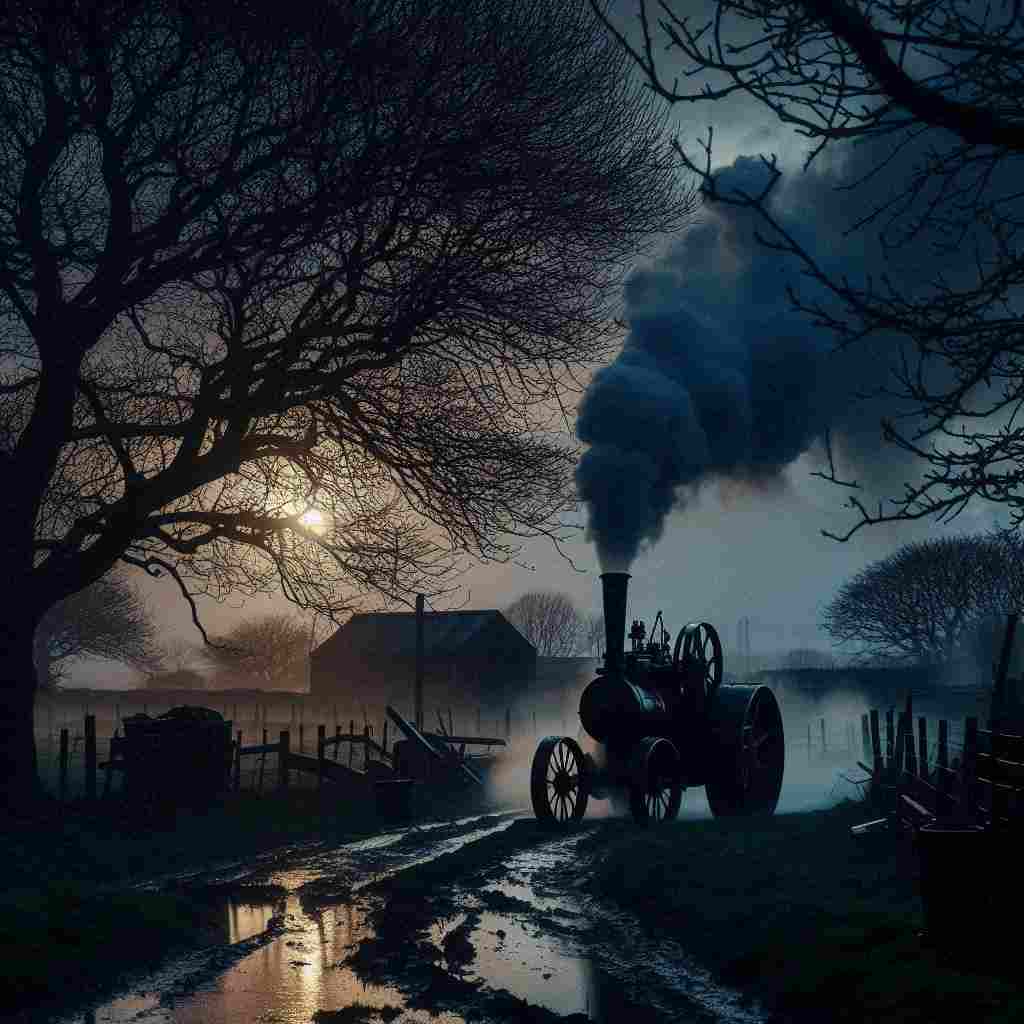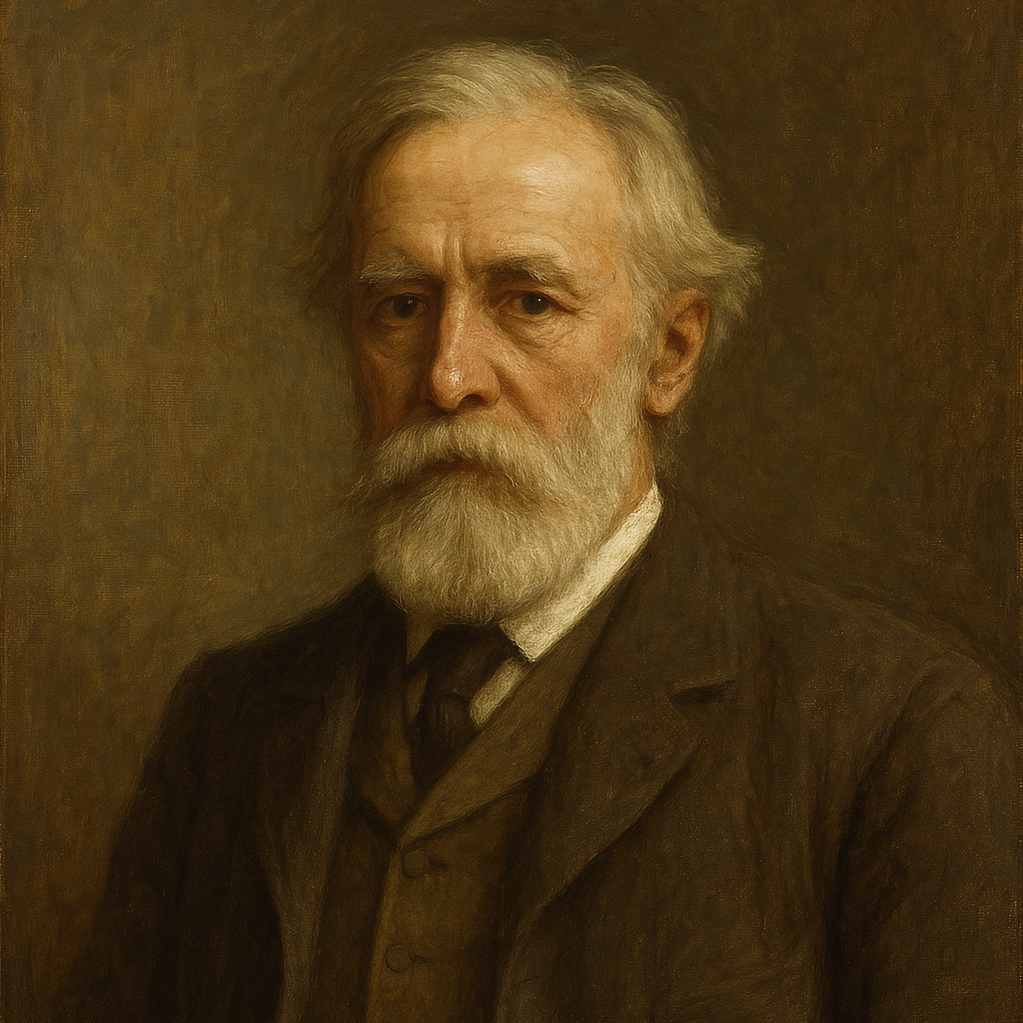Winter Nightfall
Robert Bridges
1844 to 1930

The day begins to droop,—
Its course is done:
But nothing tells the place
Of the setting sun.
The hazy darkness deepens,
And up the lane
You may hear, but cannot see,
The homing wain.
An engine pants and hums
In the farm hard by:
Its lowering smoke is lost
In the lowering sky.
The soaking branches drip,
And all night through
The dropping will not cease
In the avenue.
A tall man there in the house
Must keep his chair:
He knows he will never again
Breathe the spring air:
His heart is worn with work;
He is giddy and sick
If he rise to go as far
As the nearest rick:
He thinks of his morn of life,
His hale, strong years;
And braves as he may the night
Of darkness and tears.
Robert Bridges's Winter Nightfall
Introduction
Robert Bridges’ poem “Winter Nightfall” is a poignant exploration of the themes of mortality, the passage of time, and the inevitable decline that accompanies aging. Written with a keen eye for detail and a profound sense of melancholy, the poem captures the essence of a winter evening as a metaphor for the twilight of life. This analysis will delve into the poem’s structure, imagery, and thematic elements, providing a comprehensive understanding of Bridges’ work.
Structure and Form
“Winter Nightfall” is composed of seven quatrains, each following an ABCB rhyme scheme. This structure lends a rhythmic quality to the poem, mirroring the steady, inevitable progression of time. The use of quatrains also allows Bridges to build a narrative that unfolds gradually, much like the encroaching darkness of a winter evening.
The meter of the poem is predominantly iambic, with variations that reflect the natural cadence of speech. This choice of meter enhances the poem’s contemplative tone, as the regular beat of the iambs mimics the ticking of a clock, underscoring the theme of time’s relentless march.
Imagery and Symbolism
Bridges employs vivid imagery to evoke the sensory experience of a winter nightfall. The opening lines, “The day begins to droop,— / Its course is done,” immediately set the tone of decline and finality. The personification of the day as something that “droops” suggests a weariness, a natural end to a cycle.
The imagery of darkness deepening and the obscured setting sun further reinforces the theme of obscurity and the unknown. The “hazy darkness” and the unseen “homing wain” create a sense of mystery and foreboding, as if the world is gradually being swallowed by the night.
The poem’s middle stanzas shift focus to more tangible elements of the scene, such as the “engine pants and hums” and the “soaking branches drip.” These images ground the poem in a specific, rural setting, while also contributing to the overall atmosphere of desolation and decay. The “lowering smoke” that is “lost / In the lowering sky” serves as a powerful metaphor for the speaker’s own sense of being lost or consumed by the encroaching darkness.
Themes of Mortality and Aging
At the heart of “Winter Nightfall” is the theme of mortality. The poem’s central figure, the “tall man” who “must keep his chair,” embodies the inevitability of aging and the physical decline that accompanies it. His inability to “breathe the spring air” or “rise to go as far / As the nearest rick” highlights the limitations imposed by his frail condition.
The man’s reflections on his “morn of life” and “hale, strong years” introduce a poignant contrast between past vitality and present infirmity. This juxtaposition underscores the transient nature of life and the inevitability of change. The man’s bravery in facing “the night / Of darkness and tears” speaks to the human capacity for resilience in the face of mortality.
The Metaphor of Winter
Winter, in this poem, serves as a powerful metaphor for the final stage of life. The season’s associations with cold, darkness, and dormancy mirror the themes of decline and death. The persistent “dripping” of the branches throughout the night symbolizes the relentless passage of time and the slow, inevitable erosion of life.
Bridges’ choice of winter as the setting for his meditation on mortality is particularly apt, as the season’s harshness and stillness evoke a sense of finality and introspection. The poem’s closing lines, with their emphasis on “darkness and tears,” leave the reader with a lingering sense of melancholy and reflection.
Conclusion
“Winter Nightfall” by Robert Bridges is a masterful exploration of the themes of mortality and the passage of time. Through its carefully crafted structure, vivid imagery, and poignant symbolism, the poem captures the essence of a winter evening as a metaphor for the twilight of life. Bridges’ ability to evoke a deep sense of melancholy and introspection makes this poem a timeless meditation on the human condition.
This text was generated by AI and is for reference only. Learn more
Want to join the discussion? Reopen or create a unique username to comment. No personal details required!



Comments
No comments yet. Be the first to comment!